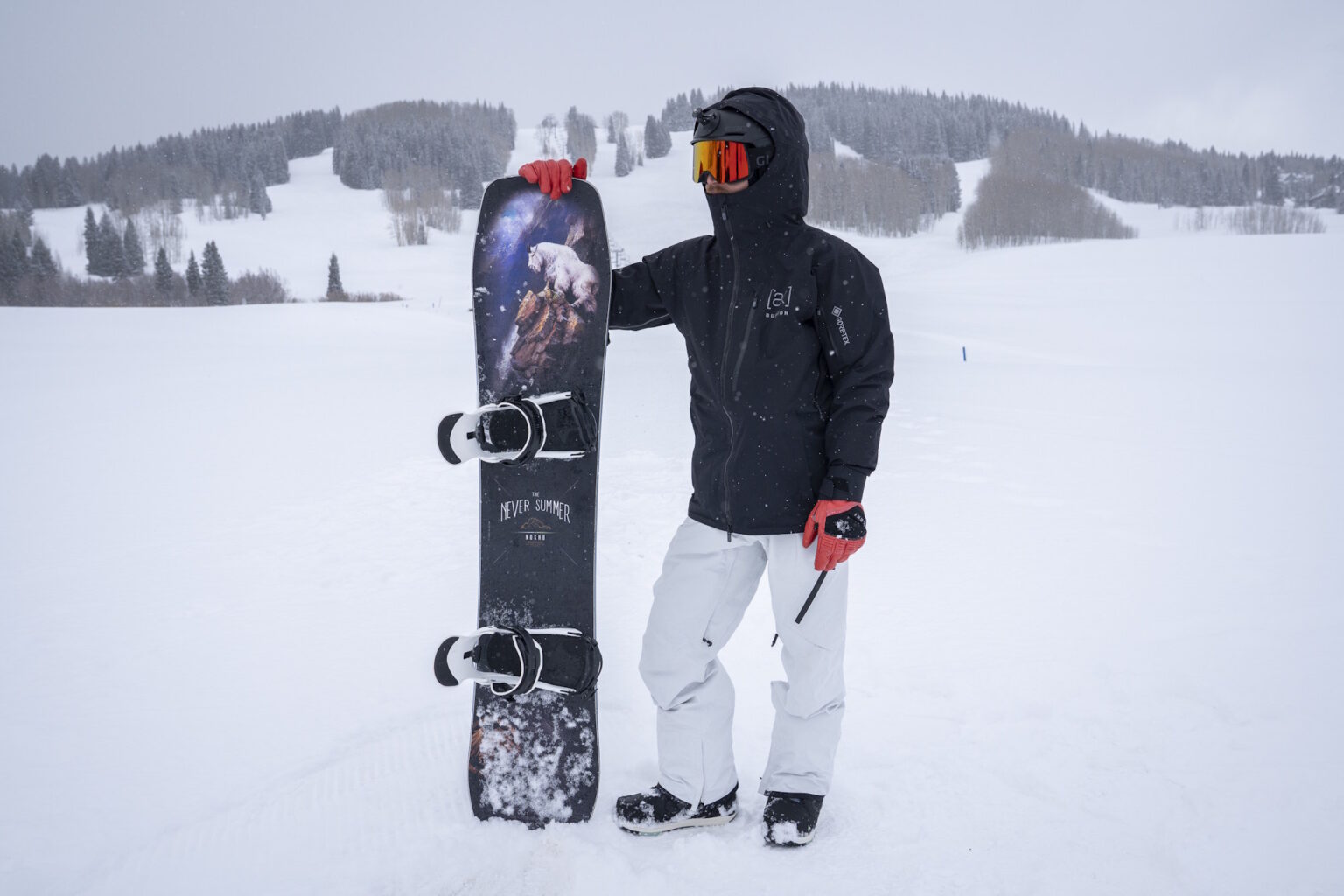For years, snowboard bindings have remained relatively the same, with two straps to put on and take off, requiring extra time at the top of the lift compared to skiers. Companies like FLOW had tried to create a fast-entry binding with a droppable high back. But these were often heavy, awkward, and didn’t have the performance of expert-level riders needed. That’s where the Jones Mercury FASE Snowboard Binding comes in.
For several years, the company has been working on an all-new fast entry and exit snowboard binding that retains the lightweight and performance demanded by experts and competitors. Professionals like Victor De La Rue and Stale Sandbech have already claimed first place in contests like Natural Selection and the Freeride World Tour on the FASE bindings.
While I’m not a professional like Victor or Stale, standing on top of a double black diamond bowl at Crested Butte Mountain Resort, I need confidence in my equipment and mind.
In short: Jones is constantly pushing the boundaries of snowboarding, and the all-new Jones Mercury FASE Snowboard Binding ($380) does just that. The new FASE bindings combine the latest generation of freeride bindings with a fast entry and exit system, finally combining high performance and quick entry into an advanced-to-expert binding capable of doing it all. While it might not be perfect, the Mercury Fase is the next evolution of snowboard bindings.
See how this set lines up next to our other top picks in the Best Snowboard Bindings buyer’s guide.
-
FASE Fast entry system -
Mid-stiff freeride binding for all conditions and terrain -
Lightweight and high-performance binding
-
FASE comes with additional costs -
FASE system entry is not ideal in some terrain -
Not a beginner-friendly binding
What Is FASE?
FASE stands for Fast Entry System and is its own brand. New for 2025, FASE partnered with Jones to bring its innovative technology to Jones’s flagship snowboard binding, the Mercury. Finally, after years of waiting, there’s a snowboard binding that combines the performance, comfort, and security of a two-strap system with the convenience of fast entry.
The Mercury binding is built for advanced to expert-level riders who want a binding that blends responsiveness and comfort to charge hard in all terrain and conditions.
Based on my pre-debut testing, these bindings excel at freeriding, sending cliffs, boosting side hits, and landing backflips off Crested Butte’s Money Booter rock.
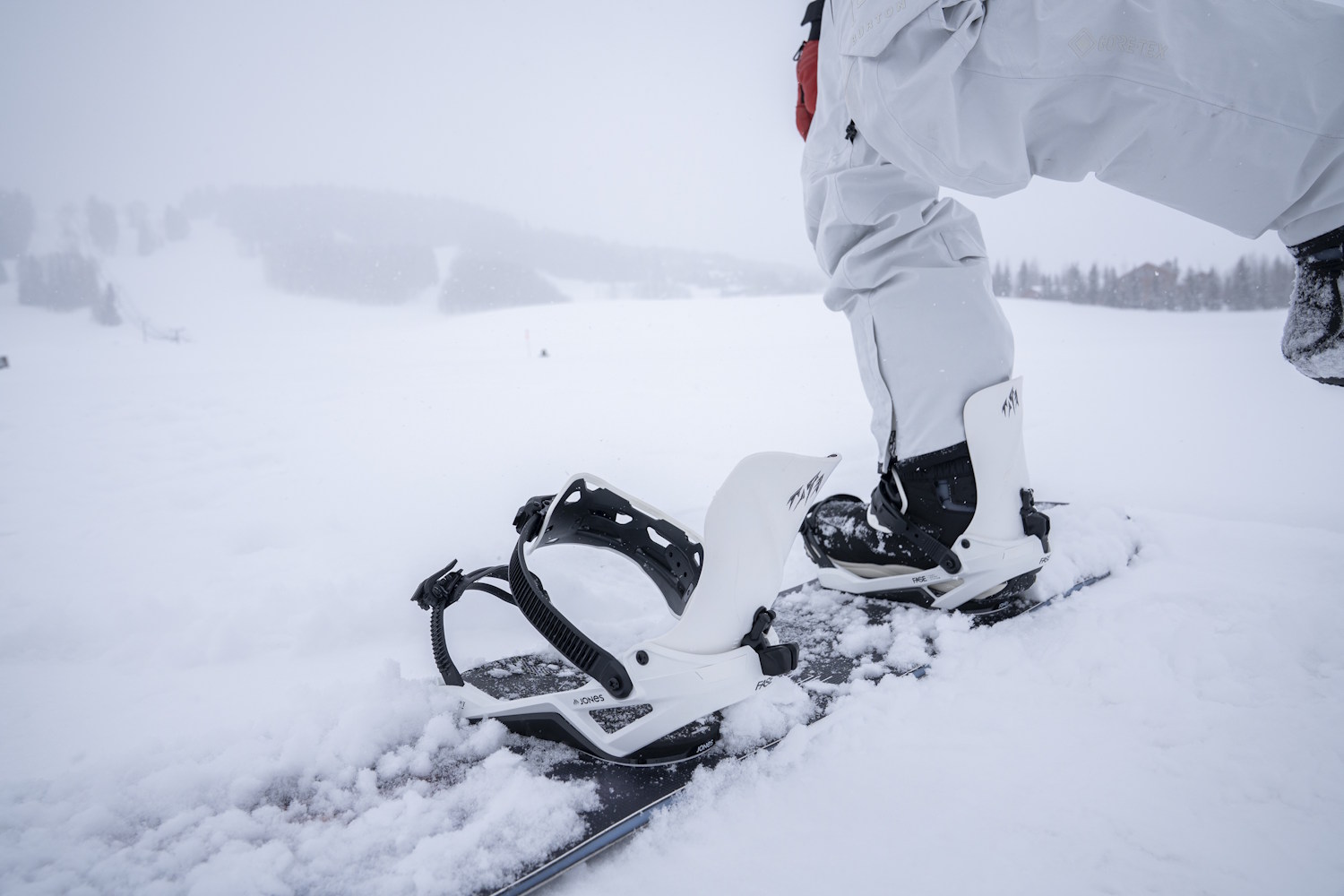
My Search for Faster-Entry Snowboard Bindings
I’ve tried numerous solutions for a faster snowboard binding throughout my snowboarding career. During my first two seasons as a snowboard instructor in the Midwest, I was hooked on FLOW’s easy entry system as I was riding groomers and mainly teaching on greens and blues. When I moved to Crested Butte and started charging all-mountain, expert terrain, I switched to a higher-performing traditional two-strap binding.
Since then, I have also tried my fair share of step-on bindings, including the newest iteration from Burton. With all these faster entry systems, I traded off locked-in performance for faster clip-ins at the top of a chairlift.
In February through April, I got to put 22 days on an early test of the Mercury FASE bindings at Crested Butte Mountain Resort. Conditions varied from single-digit negative mornings and heavy wet powder to warm spring slush. I rode blue and green groomed runs and double-black extreme terrain.
I, at 5’9 and 150 pounds, was riding a size M binding with a 10.5 boot, the upper limit for a medium binding, which might have explained the lack of flexibility in the toe cap. Throughout testing, I got to try a range of snowboard boots from Thirty Two, Salomon, Ride, Head, K2, and Vans, and found good compatibility with all of them. Underneath the bindings was my trusty all-mountain snowboard, the Neversummer Nohku 161 Wide.
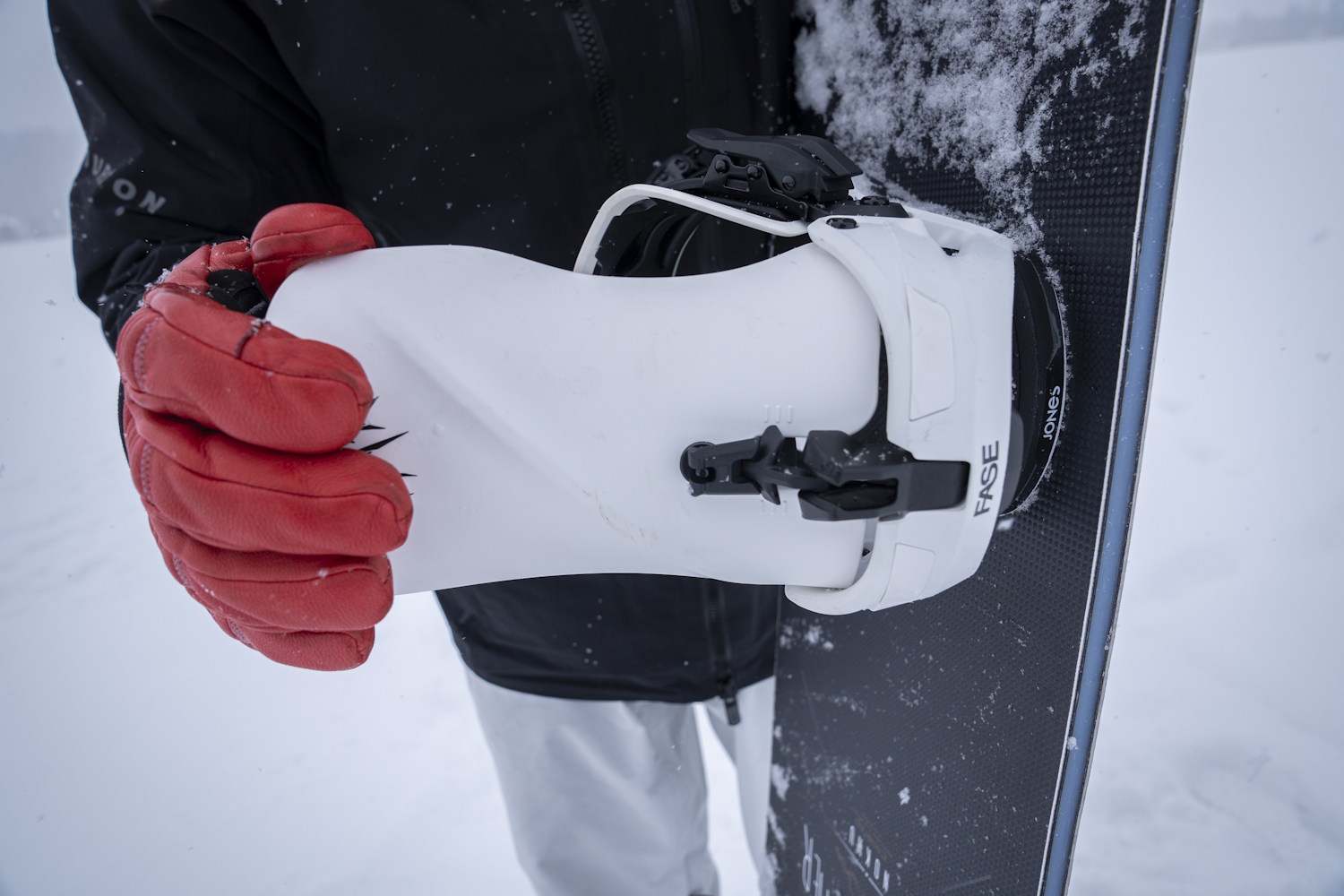
FASE Fast Entry System
The binding is built around the all-new FASE system, so let’s break down the company and technology. The FASE team is made up of snowboarders and incorporates top brands and athletes like Jones, Thirty Two, Bateloen, and Rome.
FASE resembles a regular two-strap snowboard binding and functions like a traditional strap system. The fast entry works with the Autoback feature, letting the binding highback drop backward 45 degrees. This provides space for easily sliding your snowboard boot into and out of the binding from behind. The motion feels like putting on a slip-on shoe.
A small tab at the bottom of the highback flips and locks the highback into riding position when a snowboard boot is fully pressed down. It’s important to note that the toe and ankle straps don’t move during this process, like older FLOW bindings. So, you can set them once and forget them, or crank them down tighter for an extra locked-in feel after stepping in.
Stepping out requires you to loosen your ankle strap slightly before lifting your foot up and back, the highback simultaneously falls backward again, locking open, so you can easily step out. Both entering and exiting the bindings only involve one hand, and this system is compatible with any snowboard and snowboard boot combo.
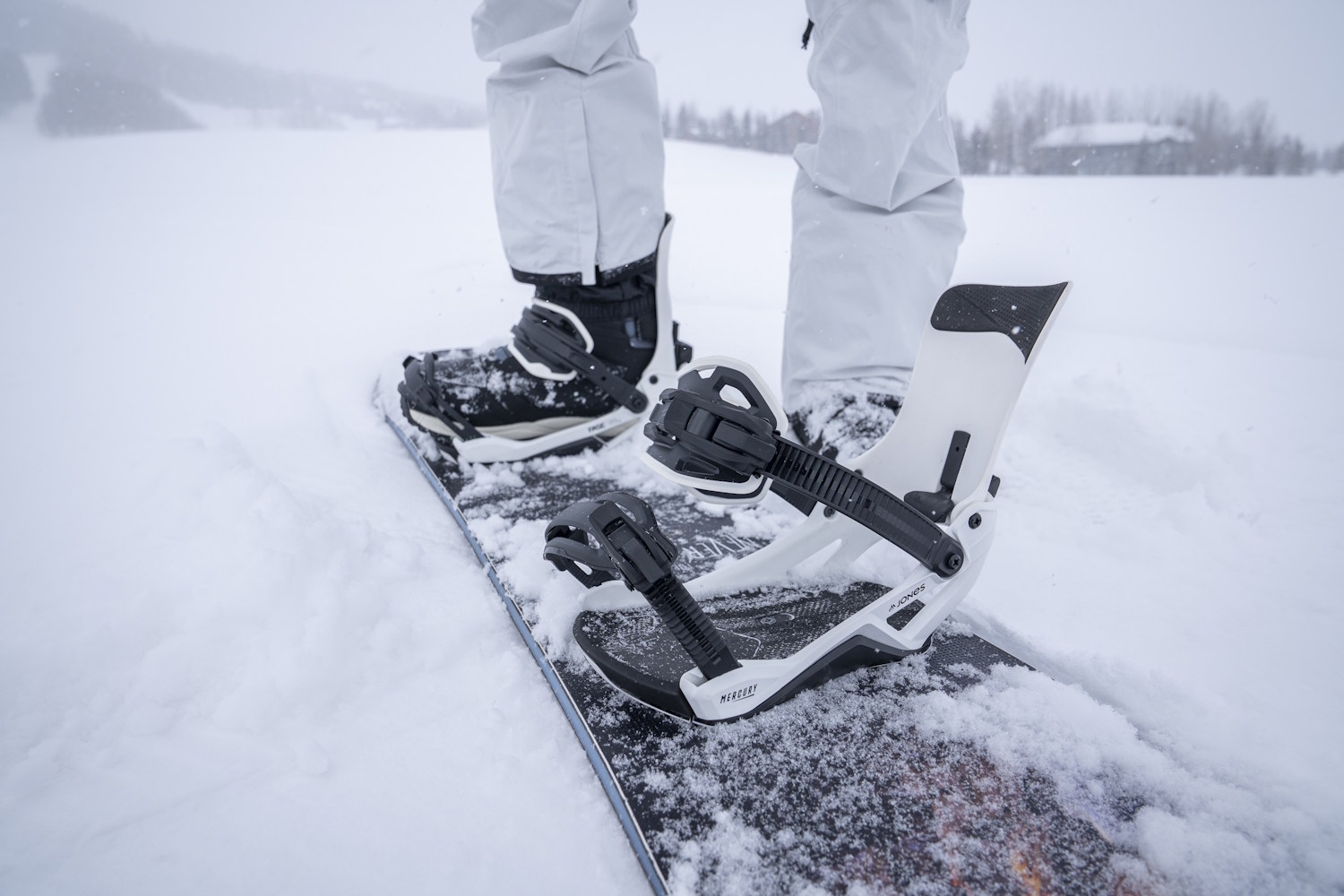
Unique Ankle & Toe Straps
Besides the highback system, the FASE bindings also feature unique straps. The FastStrap ankle strap has an extra-long ratcheted strap nearly twice as long as traditional snowboard binding straps.
Here, you can loosen the strap fully without it coming off the ratchet system, meaning no fussing to slip one side into the other; just crank down and go. This offers faster use than traditional ankle straps and simple one-handed operation.
Then comes the Locked-In Toe Strap. The design for this doesn’t have much forward or backward flex within the straps, leading it to be locked in place. The goal is to set the toe strap once and not have to mess with it throughout your day. Just step in, crank your heel strap, and ride.
Sturdy, Locked-In Backflips
During testing, I was graced with several big powder days, including one plush enough for backflips. With no prize on the line, no cameras, and no crowd, I carefully studied a large rock protruding from the slope, known locally as Money Booter.
There’s a 20-foot gap to the landing’s steep sweet spot. I plan to ride off while lying backward, letting my feet float above my head, as I look backward until I can spot my landing. I commit and land perfectly on my feet with a fast entry binding.
The Mercury FASE finally delivers the premium construction, locked-in feeling, and confidence I need to maximize the terrain — including the largest in-bounds backflip I’ve landed.
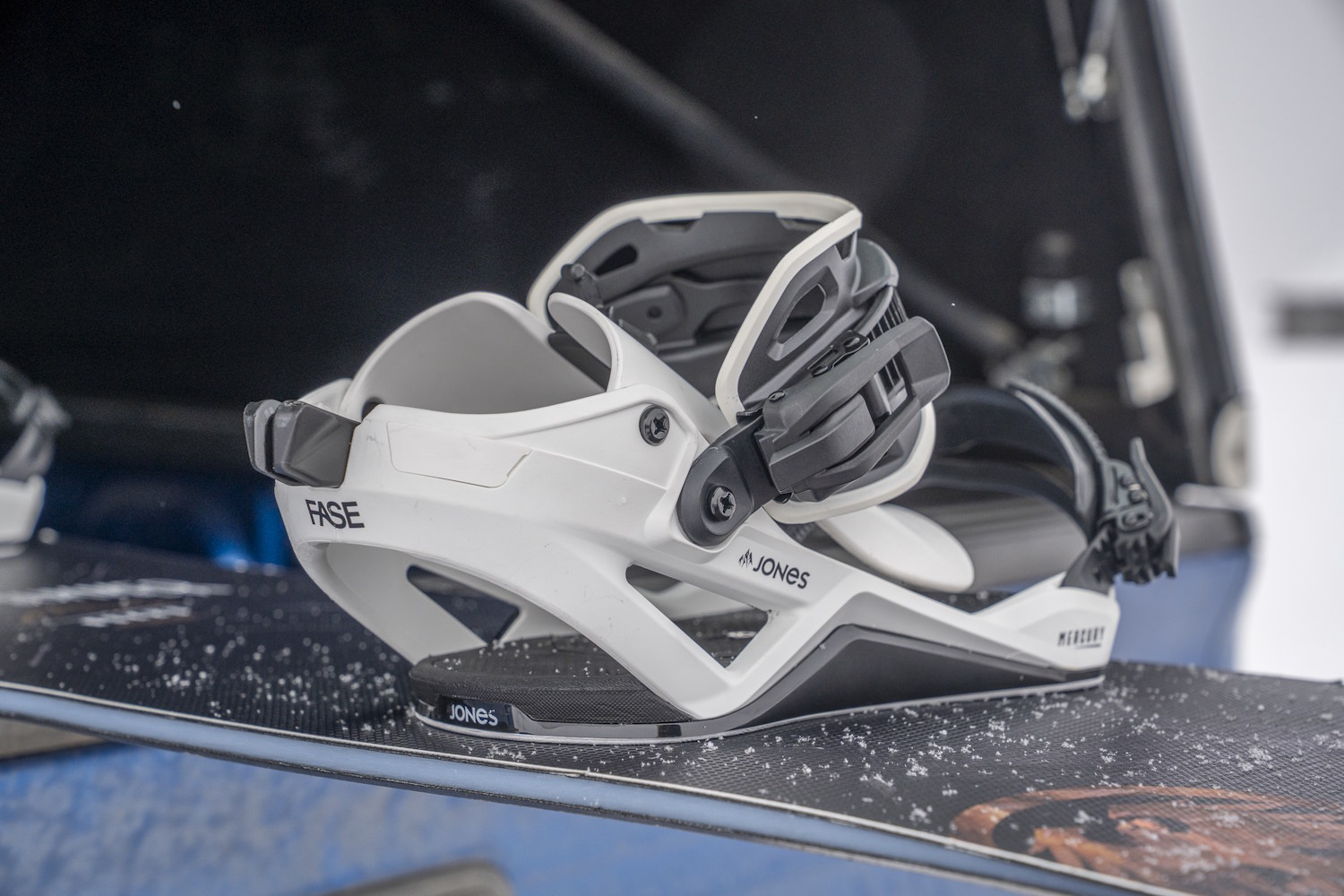
Precise Control
The performance comes from two distinct components: the Fusion XR Baseplate and Medium-Stiff flex profile. The baseplate technology provides superior board control and feel, essential for fast-charging riding.
That medium-stiff rigidity is versatile enough for all conditions, like groomers. But it’s also stiff enough for high-performance jump turns in no-fall terrain — it’s a binding that inspires trust when the terrain influences the opposite.
Drawbacks
Overall, the FASE system does just what it’s supposed to do, making entry and exit easier and faster than traditional bindings. I found it helpful to loosen my ankle straps a few notches before trying to enter or exit the binding, but I was able to easily strap in and out with one hand without taking the strap fully off the ratchet.
Additionally, I could leave my toe strap in one position, but I had to push it with my hands occasionally to get it to sit correctly on the toe cap of my boot when using the FASE. Personally, more pivoting of the strap forward and backward would help me get in and out more easily and set the toe cap perfectly over my boot.
Lastly, the FASE works much more easily on flat ground. On steep terrain, I still found myself sitting on the ground and using the two-strap binding as a traditional strap binding, by taking off the ankle and toe straps completely, adding my foot, and then strapping both over the top.

Conclusion: Who Should Buy
Once locked in, the bindings truly shine compared to other fast entry systems. The two-strap system feels light and tight and delivers ultimate performance and response. I could charge double blacks, rip the park, and even send a few backflips, all while feeling completely locked onto our board.
The best part of this system is that it works with any boot and board combination. Even though it’s a fast entry, you can still enter and exit just like a traditional snowboard binding by unclipping both the toe and ankle straps. Not every situation was effortless for getting in and out, but overall, it was easier without sacrificing weight, performance, or board feel, something extremely important to expert riders.
The new FASE Mercury bindings have been designed by riders and proven by professionals, and they have gotten the GearJunkie stamp of approval. So next time you’re looking to upgrade bindings, try the FASE system. I loved them, and so will you.
Read the full article here



